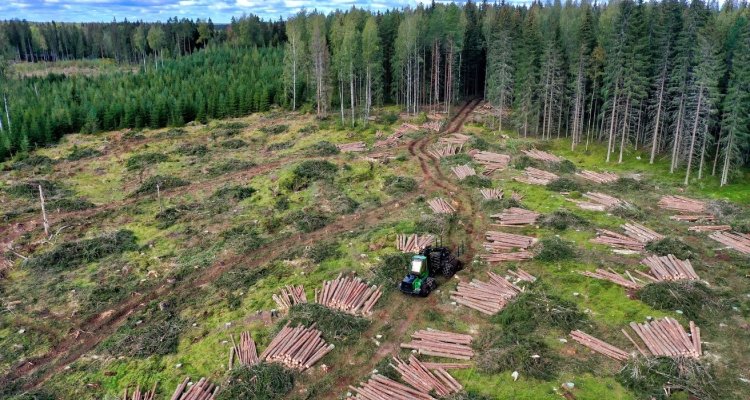
Thesis subject
MSc thesis topic: Dutch Forest Monitor - AHN based forest change detection in the Netherlands
ALS | Airborne Lidar Scanning data (ALS) provides height information in XYZ points. ALS is commonly used to derive digital elevation models for larger areas as well as to extract other derivates from height information about objects. Well-known examples are digital terrain and surface modelling, hydrological derivatives or modelling and adding the third dimension (z) to geo-visualizations. ALS is also useful for modelling vegetation, for example in forest management, crop monitoring or 3D representations of urban green.
AHN | The Algemeen Hoogtebestand Nederland (AHN) is an ALS dataset that covers the whole of the Netherlands and was mainly of value for national water management. In 2014 the AHN became publicly available, free of charge, and is currently widely used in 3D modelling of buildings and other physical objects in the Netherlands. The benefit of the AHN dataset is the large spatial coverage of the ALS. On the other hand, one of the major drawbacks and challenges of the AHN ALS data is the relatively limited point density (10-20 pts/m2). This raises the question what the potential is of the AHN in the Netherlands and to what extent this dataset can be used for representing and modelling the world around us.
So far, the AHN has already been used and tested for its potential to extract more information about the objects and the world around us. However, we believe that the full potential of this specific AHN dataset is not yet fully explored, especially regarding the representation and modelling of vegetation in the Netherlands. We like to continue the work already done and explore the potential of AHN for research on Dutch Green in the urban, rural and forest stands in the Netherlands.
Forest changes | Having already multiple acquisition years (mainly AHN version 2, 3, 4 and 5 upcoming) for the AHN database there is a potential to monitor change in the forest structures. Deforestation or forest clearing results in ‘gaps’ which can potentially be detected
Relevance to research/projects
Having an overview of these forest changes, for example as the results of forest maintenance, one can better investigate what the potential impact is of human interventions on the ecological processes in the forest. For this it is important to detect forest clearances, their location, shape and size. With this information one can better understand the dynamics in Dutch forests and the impact of human interventions to develop future steps towards healthy Dutch forests.
Research Objectives
The Exact Research Objectives will be formulated with supervisor, but the general objective is:
- To detect changes in Dutch forests using the AHN series and make a quantified overview of these changes; Where are these changes (location), what is their size and shape and what characterizes the change (what is removed; height and type of tree, number of trees, etc.)
- Final objective could be to compare natural (unmanaged) forests with managed forests.
Requirements
- Due to the relatively large file sizes (point clouds) the methods for this thesis research must be implemented in a scripting language like Python, most likely R. Therefor basic scripting skills (e.g. python or R) are required, but especially the curiosity and willingness to learn/invest more in (geo)scripting skills.
- Enthusiast of lidar in combination with a passion for the green nature and forests.
Theme(s): Sensing & measuring; Integrated Land Monitoring